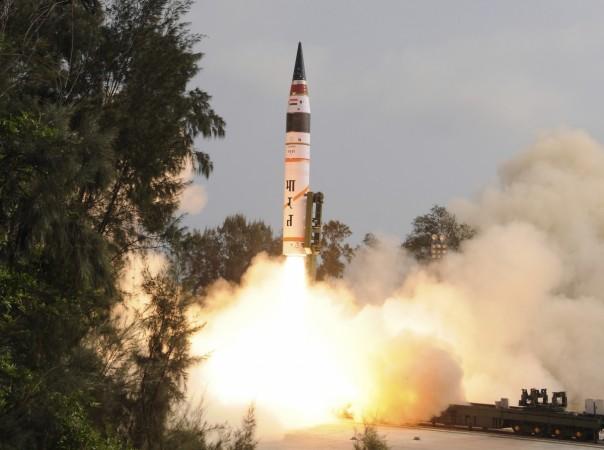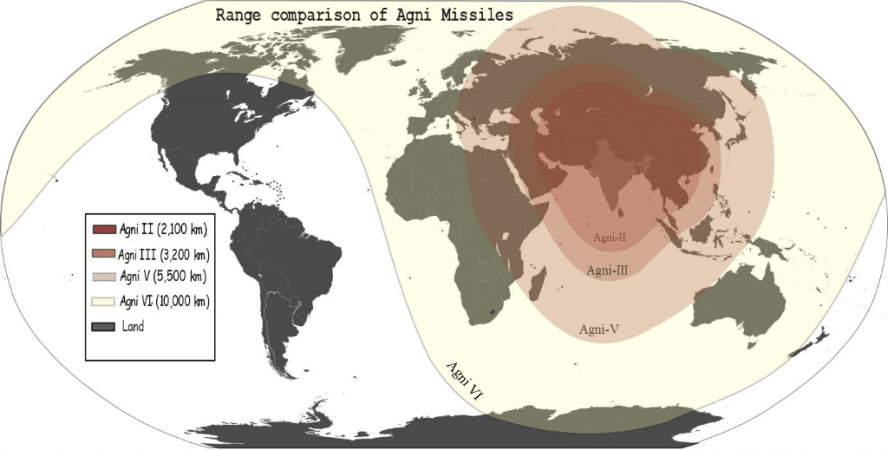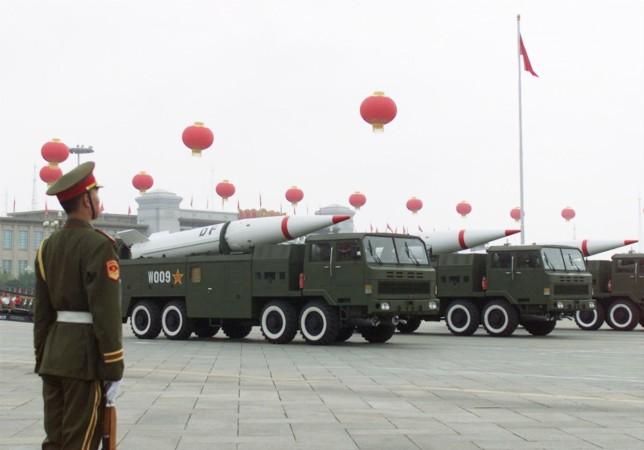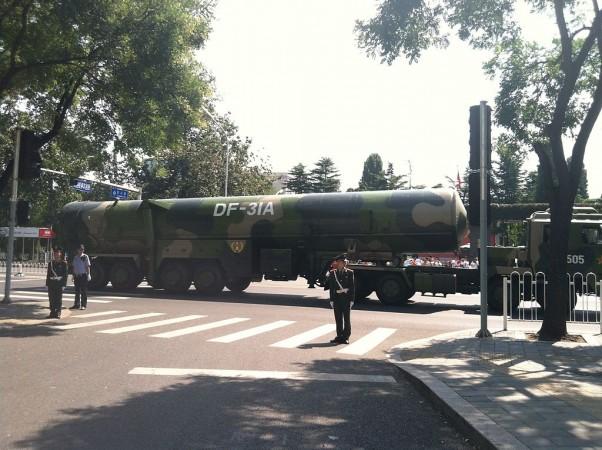India and China have been locked in a standoff at Doklam near Sikkim for nearly two months now. With India putting up a bold face by refusing to pull back troops from the disputed region despite Beijing's full-fledged war threat, some experts believe a military confrontation between the two countries is looming large.
But the prospect of India and China going to war is frightening because the countries are home to over 2.5 billion people and both possess nuclear weapons. Though both the countries maintain a "no-first-use" policy as part of their nuclear doctrine, India's mixed messages on whether or not it will fire a nuke first in the event of a war have China keep a close eye on India's nuclear arsenal.
Following the successful test-launch of its Agni-5 intercontinental ballistic missile (ICBM) in December 2016, India said its "strategic capabilities are not targeted against any particular country." China, which considered the Agni-5 test as a provocation, also showed off DF-31AG, a new and more lethal variant of its Dongfeng 31 long-range nuclear missile, on July 30 during the annual military parade to mark the founding of the People's Liberation Army (PLA).

Though both India and China are modernising their nuclear ammunition, a face-off involving nukes will be the last option. However, given the ongoing developments of nuclear warheads by both the countries, a look into their ballistic missile capabilities will help us better understand how they stack up against each other.
India's Agni missiles
Agni is a family of medium to intercontinental range ballistic missiles developed by India. The first missile of the series, Agni-1, is a single-stage solid propellant with a range of 700 to 1,200 kilometres. Weighing 12,000 kilograms, the missile can carry a single warhead of 1,000 kilograms.
Agni-2 is a two-stage, medium-range solid propellant ballistic missile, which comes with a greater range of 2,000 to 3,500 kilometres. The missile, which weighs 16,000 kilograms and carries a single nuclear warhead of 1,000 kilograms, can reportedly target western, central and southern China, if launched from a strategic location.

Agni-3, on the other hand, is an intermediate-range, two-stage solid propellant ballistic missile. Compared to the Agni-1 and Agni-2, Agni-3 is shorter, wider and capable of delivering a heavier warhead to a greater distance of 3,000 to 5,000 kilometres. The missile weighs 48,000 kilograms, and can carry a single warhead of up to 2,000 kilograms.
Agni-4 is also a two-stage solid propellant missile with a length of 20 metres, and a launch weight of 17,000 kilograms. With a listed operational range of 3,500 to 4,000 kilometres, the missile can pelt hit nearly all of China.
India is also developing a longer-range Agni-5, a near-intercontinental ballistic missile, which can carry a warhead for more than 5,000 kilometres. Some experts, however, said the missile has an actual range of up to 8,000 kilometres, which makes it a proper ICBM.

According to some reports, Agni-5 will carry multiple independently targetable reentry vehicle (MIRV) payloads. Although it is still unclear whether India has developed the capability, officials reportedly said they were working on MIRVed warheads to breach ballistic missile defences.
Various reports suggested India has begun development of a full-fledged ICBM, known as Agni-6, with a speculated strike-range of 8,000 to 10,000 kilometres. It is expected to be a four-stage ICBM, and can be launched from both submarines and land-based launchers.
Chinese Dongfeng missiles
Dongfeng series, also referred to as DF missiles, is a family of short, medium, intermediate-range and intercontinental ballistic missiles operated by the PLA. Dongfeng 1 and Dongfeng 2 were the first missiles of this series with ranges of 550 kilometres and 1,250 kilometres, respectively. However, China retired both missiles.

Dongfeng 3, China's first domestic intermediate-range ballistic missile, originally had a range of 2,500 kilometres and was designed to carry a payload of up to 2,000 kilograms. The DF-3 was retired in 2010, and was replaced by the DF-21, a two-stage, solid-fuel medium range ballistic missile that can carry a nuclear warhead with a range of up to 2,500 kilometres.
Dongfeng 4, China's first two-stage ballistic missile with 5,550-7,000 kilometre range and 2,200-kilogram payload, was replaced by DF-31, the country's newest road-mobile, solid-fuel ICBM that can carry a warhead for more 8,000 kilometres. China also developed Dongfeng 5, which has an improved variant called DF-5A with a range of over 13,000 kilometres.
Though the country had developed other missiles in the Dongfeng series, one of the first that attracted international attention was Dongfeng 26. The missile is said to be China's first conventionally-armed ballistic missile that can reach American naval bases in Guam. Also referred to as "Guam Killer," the DF-26 has a range of 3,000 to 4,000 kilometres, and may be used in the nuclear, conventional and anti-ship strike roles.

China is currently also testing Dongfeng 41, which has an operational range of 12,000 to 15,000 kilometres, which would make it the longest range missile in operation. According to reports, the Df-41 will be able to strike the continental US within 30 minutes.
During the 2016 dispute with Pakistan, the then-Indian defence minister Manohar Parrikar said the India should not "bind" itself to the no-first-use nuclear policy.
The Indian government later distanced itself from Parrikar's remarks saying it was his personal opinion. However, given the rising tension between New Delhi and Beijing over Doklam, possibilities of a nuclear war cannot be ruled out.

















